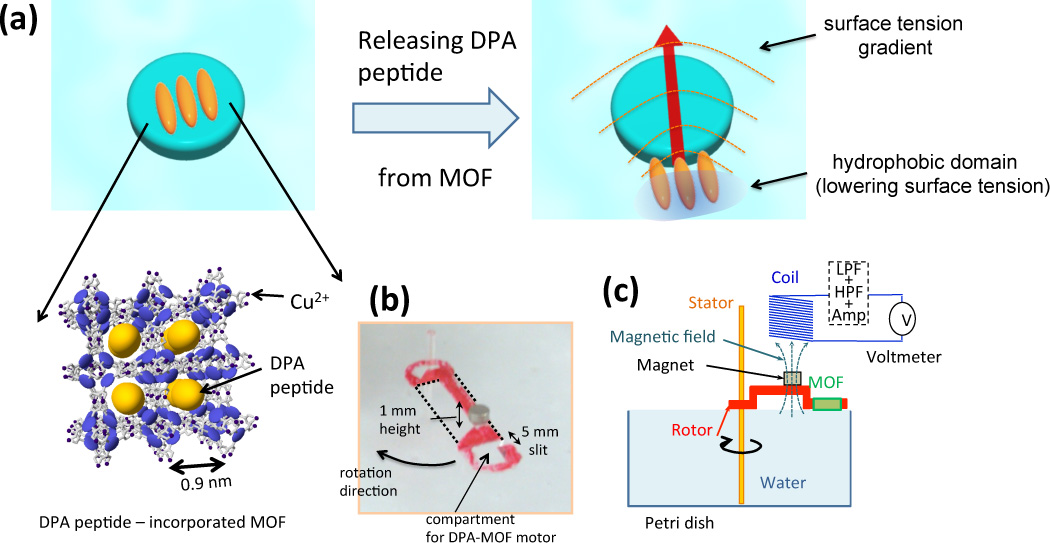Figure 1.

(a) Illustration of DPA peptide-MOF motor design and moving mechanism. DPA peptides are incorporated in pores of HKUST-1 MOF (left). As this system is launched onto water, DPA is pumped out by water because water molecules replace DPA slowly via hydrophilic interaction with the MOF framework (right). Emitted DPA peptides are quickly self-assembled at the MOF-liquid interface to form hydrophobic domains, which lowers the surface tension and drive MOFs to higher surface tension direction (red arrow). (b) A photograph of a rotor. A red circular plate is a magnet, and DPA peptides are amounted right to the magnet on the rotor. (c) Schematic illustration of experimental setup. Rotor is design in convex shape to minimize the friction with water interface as it rotates. The motion of rotor self-powered by DPA-MOF motors induces electric potential in a solenoid coil and the signal is amplified by a homemade electric circuit.
